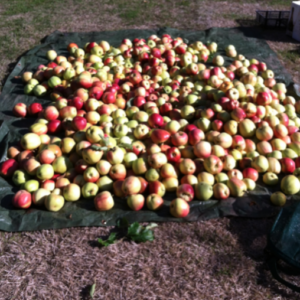 In February, Program Coordinator Emma Luna Davis gave a presentation at Salt Spring Island’s Seedy Saturday about the Galiano Community Food Program’s Gleaning Project. Here are the notes from that presentation.
In February, Program Coordinator Emma Luna Davis gave a presentation at Salt Spring Island’s Seedy Saturday about the Galiano Community Food Program’s Gleaning Project. Here are the notes from that presentation.
Galiano Island Community Food Program Gleaning Project
Started in 2009, with support from the YMCA and the federal government.
WHY
Galiano has many productive gardens and hundreds of fruit trees, many of which are heritage varieties that aren’t commercially available. And while many of our landowners do make amazing use of what they produce, there is waste. Sometimes it is because the landowners may have gotten older and find climbing a ladder difficult. In other cases, the property is owned by weekenders and it can be challenging for them to make use of everything when they are only onsite for a short time, and the window of time when things are ready for picking is not very big. Sometimes, we just have a bumper season, and all of a sudden people find themselves with more than they can use. At the same time, we have many low-income households without great access to fresh produce, which can be very expensive to bring in from off-island.
We wanted to find a way to get this excess into the hands of people who need and want it, and cut down on food waste. This would be a way to reduce our dependency on produce grown off-island, and replace it with free, mostly-organic, local fruit.
The project has been a great success. The impact has been a unique opportunity to bring the community together, get to know one another, and build a sense of shared bounty and appreciation for what our island has to offer.
HOW IT WORKS
During the harvest season, we invite landowners who have a surplus to contact us. We then organize a group of volunteer pickers to meet at the property and pick. We then divide the produce into shares: 1 for the pickers, divided amongst the number of pickers we have, 1 for the landowner, and 1 that goes to the Food Program to be used in workshops or distributed to families in need. Often the landowner will decline their share or will only want a very small amount.
In 2014, we picked an incredible volume and variety of apples, pears, figs, plums, quince, corn, grapes, crabapples, and hazelnuts. We held 18 picking sessions at 10 properties, and 45 volunteers came out to pick, ranging in age from 3 months to over 70 years.
Our volunteers range from families who appreciate having access to free produce and the fun activity to do with their kids, to professional canners who access rare varieties to include in their products, to folks who use the produce to put up a big batch of preserves for the winter months, to people who just enjoy getting outside and picking as a group.
We maintain a mailing list of interested volunteers, and we send them all an invitation to pick each time there is an opportunity. Typically when we send a callout, we indicate the maximum number of people we can accommodate based on the size of the harvest and the specific situation of the site, and then we confirm with a shortlist of people who have gotten back to us. We usually don’t have to turn anyone away, but if we do they get first dibs the next time they respond.
We promote the program at our community events such as Canada Day and our annual Fiesta, with posters that we put up around the island, and through our email list.
PROFILES OF SOME OF OUR PICKING SITES
The Bellhouse, an old inn and farm, with a very well-established orchard of a variety of apples and pears. The current owner is mostly only a weekend visitor and enjoys the orchard but can’t begin to use all that comes out of it. We picked there 6 times last year.
Cable Bay Farm, which grows the best corn in the Gulf Islands. The farmers, Thomas and Henny, are very picky about what they bring to market, so once the corn is past it’s prime, or if it’s a bit too small, they invite us to pick what’s left, which is still of fantastic quality.
Page Drive, our senior living community, has one resident with an amazing huge prolific fig tree. She is no longer able to climb a ladder, so we pick her tree clean and it’s a win-win for everyone.
DISTRIBUTION
The shares of our bounty that are earmarked for households in need are distributed in several ways.
Food Program Events
The Food Program operates a number of events in the harvest season, and some of what we pick goes to these events. For example:
School Applefest
Community Kitchens
Canning and preserving workshops
Food Bank
Galiano has a small food bank operated through our church, and we bring them a portion of what we pick to give out to their users. However, our food bank is closed for July, August and September, which is the height of our program, so we usually need to use other avenues.
Health Clinic
A new idea we’ve just begun is just keeping a bowl of whatever we have fresh on the counter at the clinic for people to help themselves from, along with some information about the program and how people can get involved.
CHALLENGES
Nothing major but a few minor hiccups:
It’s challenging when we end up with unwanted excess beyond what we have the means to distribute. We’ve found it’s important to clarify how much our pickers are interested in taking home before we pick, so that we don’t pick too much.
Sometimes we have a large volume we are saving for an event and so pest-proof storage is also an issue. This year we upcycled a broken refrigerator into temporary outdoor storage by installing a few air vents.
We have to be careful stewards of the relationships with our landowners. We work hard to respect the property, only pick what we’ve been invited to pick, clean up any damaged produce, try not to leave any shares where it might attract pests, etc. and we always have one of our staff present for all picking sessions. This year we distributed seasonal gifts to our landowners of preserves that had been made by our volunteers. In the past we have had incidents where people have approached landowners to ask permission to pick before our harvesting sessions, so we no longer share the exact location of each picking very widely, only to the shortlist of volunteers who are confirmed to come out.
OVERHEAD
We have one paid staff person who coordinates and attends the pickings. We have a small list of equipment we bring:
an orchard ladder,
boxes
picking bags
picking tools
a hanging scale so we can track how much we pick
a tarp to gather the picked produce on, with taped markings to divide up into shares
Going forward
Right now things are working well. If we had more resources we might consider bringing our volunteers together to tackle two other considerations: thinning and pruning in the off season, in order to improve our harvests and the health of the trees we pick.
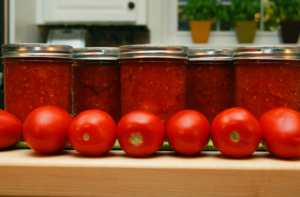 Are you afraid of your Pressure Canner?
Are you afraid of your Pressure Canner?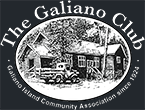
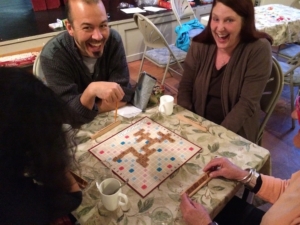 Come join us at the South Hall for a raucous evening of games with your friends and neighbours!
Come join us at the South Hall for a raucous evening of games with your friends and neighbours!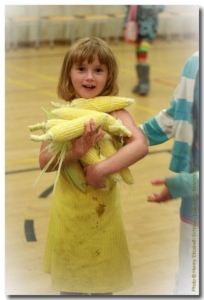 The Galiano Community School & Activity Centre Sep 13, 2015 12-4pm rain or shine
The Galiano Community School & Activity Centre Sep 13, 2015 12-4pm rain or shine Come join us for a fun afternoon of pickling. We’ll be putting up whatever’s ready – probably beans and beets. Sunday August 23rd at 1pm at the South Community Hall. Beginners and experienced picklers are welcome. Kitchen has sliding scale of $10-$20. Please bring at least 4 500ml canning jars. Please RSVP to attend this class
Come join us for a fun afternoon of pickling. We’ll be putting up whatever’s ready – probably beans and beets. Sunday August 23rd at 1pm at the South Community Hall. Beginners and experienced picklers are welcome. Kitchen has sliding scale of $10-$20. Please bring at least 4 500ml canning jars. Please RSVP to attend this class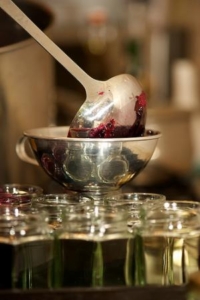 Galiano summers yield an amazing variety of tree fruits and berries, available from our farmers, through our Gleaning program and in your own backyard. Making jam is a great way to capture the taste of summer in a jar to brighten up those dark winter days.
Galiano summers yield an amazing variety of tree fruits and berries, available from our farmers, through our Gleaning program and in your own backyard. Making jam is a great way to capture the taste of summer in a jar to brighten up those dark winter days.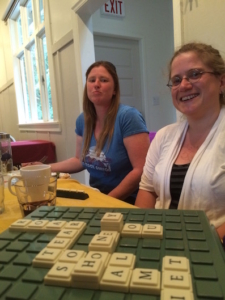 Come join us at the South Hall for a raucous evening of games with your friends and neighbours!
Come join us at the South Hall for a raucous evening of games with your friends and neighbours!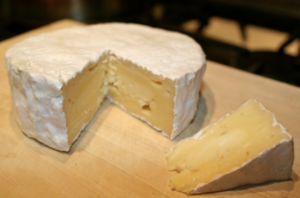 We are going to be making Camembert and Dream Cheese in oil.
We are going to be making Camembert and Dream Cheese in oil.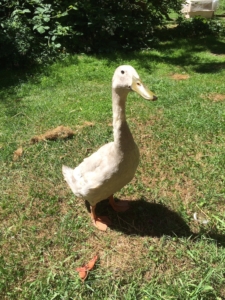 Last month, Colleen painted a bucolic picture of life with chickens that had me seriously considering adding a few to my backyard barnyard. Then I remembered why I have ducks.
Last month, Colleen painted a bucolic picture of life with chickens that had me seriously considering adding a few to my backyard barnyard. Then I remembered why I have ducks. In February, Program Coordinator Emma Luna Davis gave a presentation at Salt Spring Island’s Seedy Saturday about the Galiano Community Food Program’s Gleaning Project. Here are the notes from that presentation.
In February, Program Coordinator Emma Luna Davis gave a presentation at Salt Spring Island’s Seedy Saturday about the Galiano Community Food Program’s Gleaning Project. Here are the notes from that presentation.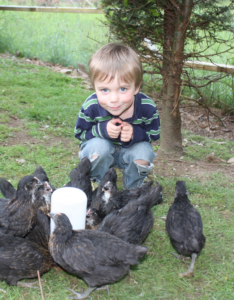 In grade five I won a public-speaking contest but the head teacher didn’t care for the topic I chose: chickens. “They were too,” she paused, curled her lip and shuddered as if she had just found a slug in her shoe, “chickeny.” I found her response amusing, for I had assumed that everyone would be fascinated by chickens. Wouldn’t anyone, given the opportunity, become completely absorbed by their clucks and coos, sleep-time murmurs, broody shrieks, curious personalities, and the dynamics of the pecking order? Because I’m the same person I was three decades ago, allow me to gush about chickens, why I adore them, and why I think they help round out a homestead. They are an essential part of the process of gaining more control over one’s food production.
In grade five I won a public-speaking contest but the head teacher didn’t care for the topic I chose: chickens. “They were too,” she paused, curled her lip and shuddered as if she had just found a slug in her shoe, “chickeny.” I found her response amusing, for I had assumed that everyone would be fascinated by chickens. Wouldn’t anyone, given the opportunity, become completely absorbed by their clucks and coos, sleep-time murmurs, broody shrieks, curious personalities, and the dynamics of the pecking order? Because I’m the same person I was three decades ago, allow me to gush about chickens, why I adore them, and why I think they help round out a homestead. They are an essential part of the process of gaining more control over one’s food production.